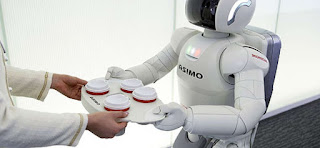In April 2020, the Trump administration announced project
“Operation Warp Speed” that aims to deliver 300 million doses of an
FDA-approved Covid-19 vaccine by January 2021. The administration, perhaps a
little prematurely, described OWS as one of the greatest scientific and
humanitarian accomplishments in history. Trump compared it to the Manhattan
project (developing the A-bomb).
The project pours enormous money into select pharma
companies for the development, manufacturing and distribution of vaccines.
Normally, these are sequential processes, meaning production capacities are
built only after a reliable proven or approved product is at hand. Considering
the emergency, OWS tries to make these processes parallel. It is accepted that
just one or two vaccine candidates will succeed, and a large portion of money
invested in development may go waste.
Till today, some $13 billion has been committed. Out
of the long list, five companies are the finalists: Moderna, Oxford/AZ, Johnson
and Johnson, Merck and Pfizer. Moderna and Oxford have started large-scale
trials.
*****
How excited should we be? If you are an American, you
should be more excited. End of June, the USA bought all stocks of Remdesivir
(Gilead) until end of September. This drug has shown some positive results. On
7 July, OWS signed a half billion dollar deal with Regeneron, locking its
potential reg-cov2 therapy for three months. No other country will be allowed
to buy it during that period. The OWS mission of producing 300 million vaccine
doses obviously matches with the USA population. Simultaneously, USA is taking
steps to withdraw from WHO, an organization that plays a key role in the fair
global distribution of vaccines. With the “America first” approach, universal
vaccination in rich countries may take priority over high risk populations in
poor countries.
*****
Is OWS political? Of course, it is. Because at the
outset, it has refused to consider any candidates from China. Moncef Slaoui,
the head of OWS, has been accused of conflict of interest. He was on the Board
of Directors of Moderna just before joining OWS. A positive announcement by Moderna,
with a dramatic rise in its share price gave him $3 million in one day. He sold
his Moderna stock for $12 million. Most OWS candidates had their share prices
going through the roof. Stock options of the Vaxart CEO were $4.3 million. A
month later, they were worth more than $28 million. Novavax is another company
that has not delivered a single vaccine to the market. A New York Times study showed that the executives of these companies
sold shares worth $1 billion at super-inflated prices.
The next time you read exciting news about a vaccine
progress, please bear in mind a possibility that the news may just be a
get-richer-quick scheme of some executives.
*****
The fastest developed vaccine in medical history, for
mumps, took four years. Trump has only 100 days. He has a weapon called the ‘Emergency
Use Authorization’ at his disposal. Pressured by him, FDA gave EUA to
Hydroxychloroquine on 28 March. After serious cardiac events, and serious side
effects, EUA was revoked on 15 June. EUA simply requires it is “reasonable to
believe” that the “vaccine may be effective”. Bill Gates has also started
several vaccine projects. But Trump can give an EUA, Bill Gates can’t.
My prediction is that some vaccine will get an
Emergency use authorization in October. The world, not knowing the difference
between an approval and EUA will be overjoyed, markets will go up. Trump may get
reelected. Once the election results are out, the authorization can be revoked.
After the elections, it doesn’t matter whether the vaccine works or not.
Ravi










